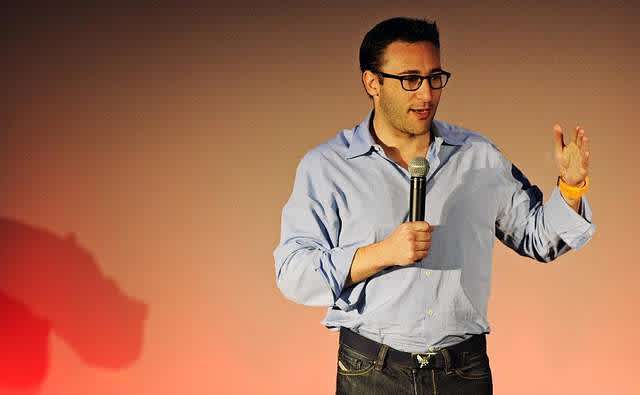
Five Simon Sinek Principles that are Essential for Inclusive Workplaces
BiasSync
ShareSimon Sinek is best known for his inspirational leadership teachings and his famous mantra: “Start with Why.” His approach emphasizes purpose, trust, and leadership that inspires action.
While Sinek’s principles have primarily been applied to business leadership, they offer insights that can be transformative for inclusion and belonging efforts in organizations.
Here’s how Simon Sinek’s teachings can inform and elevate diversity work:
1. Start with Why: Define the Purpose of Your Diversity Efforts
Sinek’s core idea, articulated in his book Start with Why, is that great leaders and organizations inspire action by clearly communicating why they do what they do, rather than simply focusing on what they do or how they do it. This principle is essential for inclusion and belonging initiatives, which often falter when employees see them as mere box-checking exercises. To truly embed diversity into an organization’s culture, leaders need to communicate the why behind these efforts. Why is diversity important to the company? Why is equity essential for everyone to thrive? Why is inclusion critical for innovation and engagement? It’s not enough to launch programs or set quotas. People need to understand how diversity and inclusion connect to the organization’s core mission, values, and long-term success.
When employees grasp the purpose of diversity beyond compliance, they’re more likely to be engaged and invested in making it succeed. Diversity becomes not just an initiative but a shared belief that drives action and commitment.
2. Create a Circle of Safety: Foster Trust and Psychological Safety
One of Sinek’s other pivotal concepts is the idea of the Circle of Safety, which he explores in Leaders Eat Last. The Circle of Safety is about creating an environment where people feel secure and trusted, allowing them to collaborate, innovate, and take risks without fear of being judged or punished.
In inclusion and belonging, fostering psychological safety is critical. For real inclusion to take root, employees must feel safe to bring their whole selves to work. They need to know they won’t be marginalized, excluded, or penalized for speaking up or sharing perspectives that differ from the norm. When people feel they belong and that their contributions are valued, they are more likely to engage meaningfully in the workplace.
Creating this Circle of Safety requires intentional leadership. Leaders must model inclusive behaviors, actively listen to diverse viewpoints, and show that they value different perspectives. This also means addressing microaggressions and bias head-on, ensuring that employees from marginalized groups – not just gender and race, but also age, ability, faith and ethnicity – feel seen, heard, and respected.
3. Leadership is a Responsibility, Not a Rank: Empower Inclusion Champions
Sinek emphasizes that leadership is not about holding a position of power, but about taking responsibility for others. In the context of diversity or inclusion, this means that the work should not rest solely on the shoulders of HR or a designated diversity officer. Instead, leaders at every level of the organization need to take ownership of fostering an inclusive culture.
Sinek’s teaching encourages us to see leadership as the act of empowering others. In diversity efforts, this could look like identifying and supporting diversity champions throughout the organization. These champions don’t need to be senior leaders—they could be anyone in the company who is passionate about driving change and creating a more inclusive environment. By empowering more people to take on this responsibility, diversity becomes woven into the fabric of the organization, rather than a siloed initiative.
4. The Infinite Game: Inclusion is a Long-Term Commitment
In his book The Infinite Game, Sinek makes the distinction between finite games (with clear winners and losers) and infinite games (which are ongoing and have no fixed endpoint). Building a truly inclusive culture is undeniably an infinite game. It’s not something that can be “won” or completed after a few years of effort. Instead, it’s a long-term, evolving commitment that requires continuous learning, adaptation, and growth.
Organizations that approach inclusion with a finite mindset—focusing on short-term metrics or quick fixes—often miss the mark. True diversity, equity, and inclusion require sustained effort and a willingness to see this work as a journey, not a destination. This means setting long-term goals, being willing to adapt strategies as the workplace and societal landscape change and understanding that setbacks are part of the process.
By embracing an infinite mindset, organizations can foster resilience in their diversity and inclusion efforts and continue to make progress even when faced with challenges.
5. Inspire, Don’t Just Instruct: Engage Hearts and Minds
Finally, Sinek teaches that great leaders inspire action by connecting with people on an emotional level. In diversity work, this is essential. It’s not enough to deliver training sessions or send out policy updates. To drive real change, organizations need to inspire employees to care deeply about inclusion and equity.
This can be done by sharing stories that highlight the human impact of inclusion, celebrating diversity in meaningful ways, and creating spaces for honest conversations. By connecting diversity and inclusion to personal values and experiences, organizations can engage employees’ hearts and minds, making the work more personal and powerful.
Conclusion: Leading from a Place of Purpose and Trust
Simon Sinek’s teachings offer a powerful framework for elevating diversity efforts. By starting with why, fostering trust and safety, empowering leaders at every level, adopting an infinite mindset, and inspiring action, organizations can build inclusive cultures that aren’t just a series of initiatives but a fundamental part of who they are. In doing so, they’ll create workplaces where everyone feels they belong and can thrive.
To learn more about how BiasSync’s solutions support meaningful behavior change contact our team.
Not just diversity. Inclusion.
Diversity is not just about numbers. It’s about people’s experiences in the workplace. If you’re ready to understand how bias impacts your company—with data to make effective changes, contact us now.